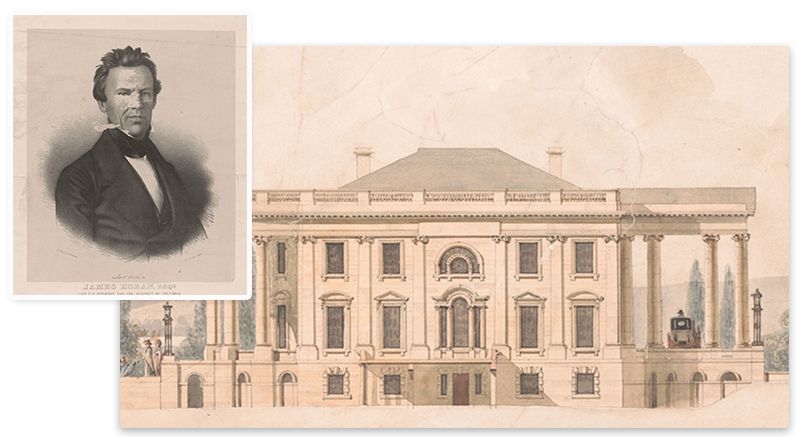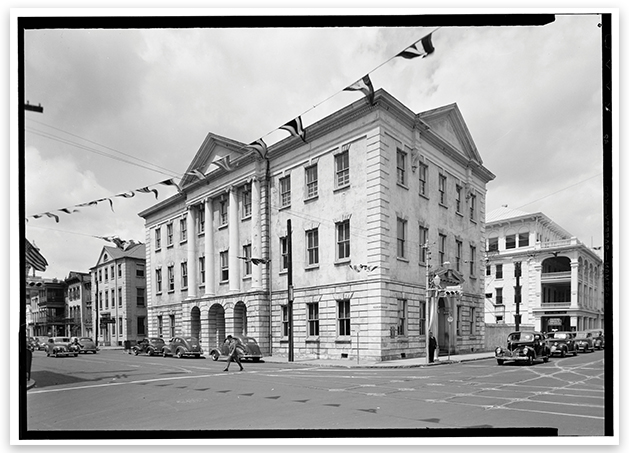Find out which local buildings he helped design

James Hoban (inset) arrived in Charleston in April 1787; Hoban was introduced to President George Washington at a party in Charleston and was later selected to design the executive mansion, with construction beginning in 1797.
If asked which local resident had the greatest impact on a building in Washington, DC, you might answer Robert Mills and his landmark Washington Monument. But many might disagree.
In April 1787, a little-known carpenter arrived in Charleston, having left his native Ireland, where he was born 32 years prior. James Hoban worked as a builder, possibly contributing to what is now the County Courthouse and maybe renovating the Exchange Building, just as the city was preparing it to entertain President George Washington. It was at that fete in 1791 that the Irishman and the president met, with the local press exclaiming that Hoban “was introduced to [Washington] as a man of merit and genius.”

Historians think Hoban might have helped renovate the Exchange Building.
Hoban apparently made an impression on the president, who may have seen and admired some of his local work. For when a call went out nationwide to submit plans for an executive mansion, Hoban was asked to send in his ideas. Washington chose Hoban’s proposal, and the builder reportedly traveled between Charleston and DC until construction officially began in April 1797, prompting him to move from the Lowcountry.

Many also think Hoban helped reovate what is now the County Courthouse while he was working in Charleston.
Before his death in 1831, Hoban also mentored Charleston architect Robert Mills in the nation’s capital, where he designed the Washington Monument and worked on later White House renovations. Although the house Hoban built on Wentworth Street and a theater he designed on Broad Street are no longer standing, his most enduring structure does—a world icon at 1600 Pennsylvania Avenue.